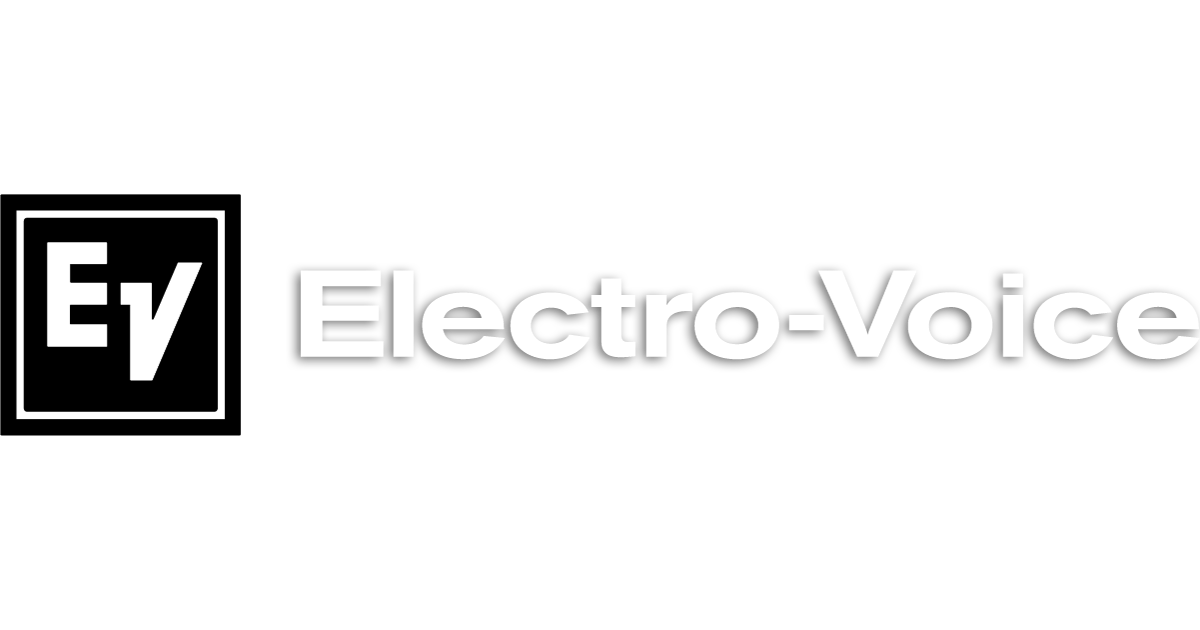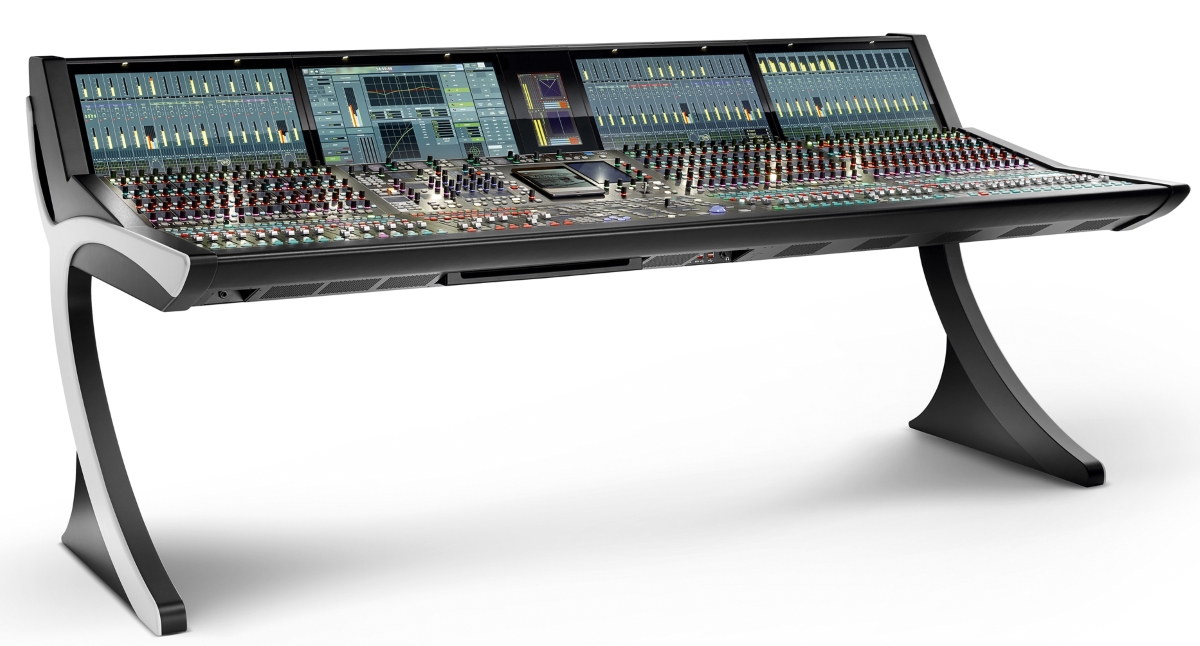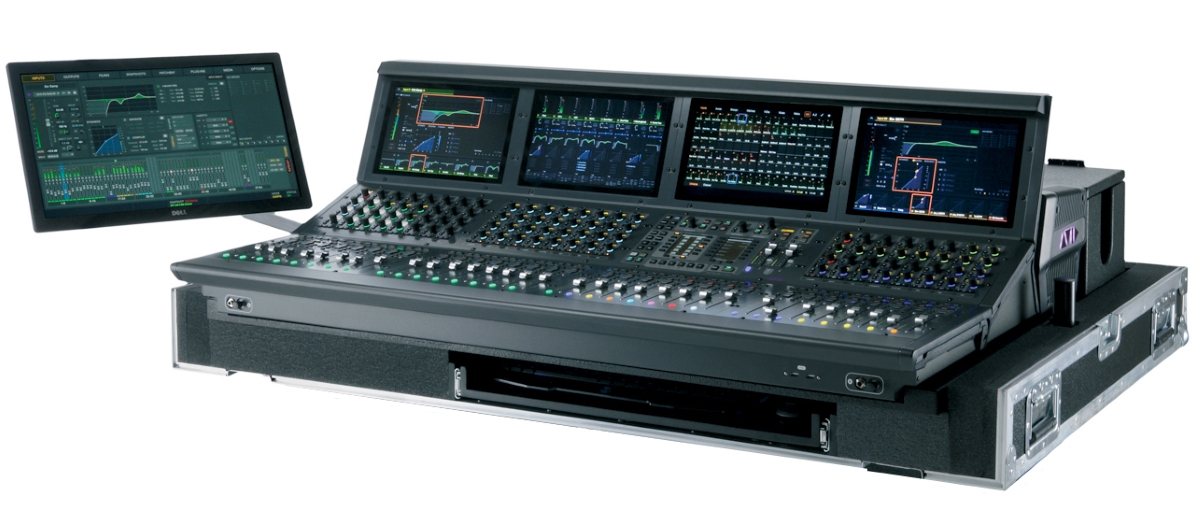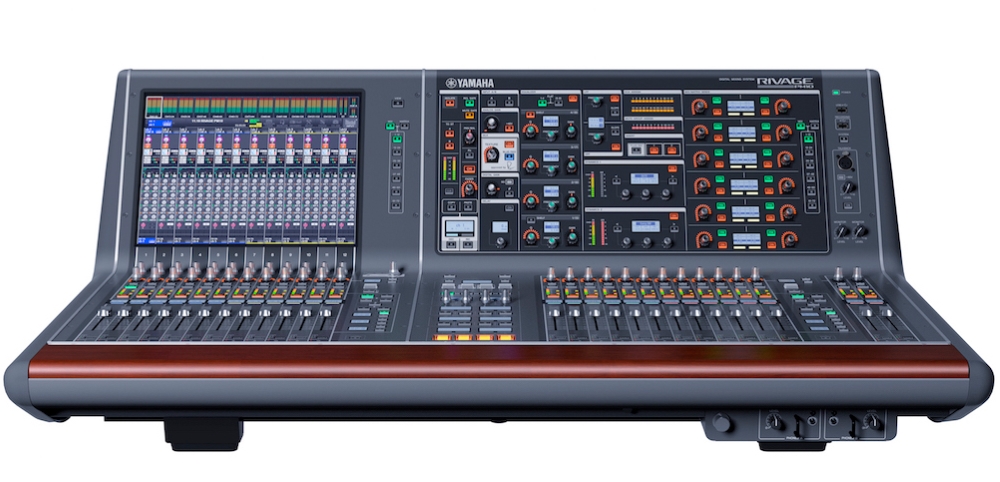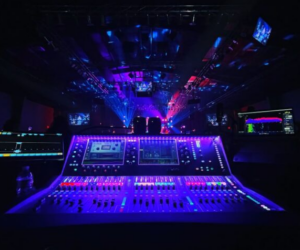Before the digital era, we categorized consoles by physical size and number of channels, with 16 channels and below considered “small,” 32 channels termed “midsize,” and above that the designation was “large.”
With a fader and channel strip for every input, even mid-sized analog boards were pretty big compared to today’s digital offerings, plus we had to drag around at least one rack with EQs, compressors, gates, and reverb and delay units.
We don’t see new large-frame analog consoles being manufactured today, and it’s also getting more rare to catch a glimpse of existing ones on the road because, in comparison to digital models, they’re quite big and heavy and thus take up too much space and are also awkward to transport and store.
By contrast, digital models (newer ones in particular) can be physically small but offer big channel counts, processing on every input and output, expansion with stage boxes, networking options and digital “snakes,” and they cost less to boot.
This past year my company sold off our last large-frame analog console. It measured about 7 feet wide, weighed in at hundreds of pounds, required four beefy stage hands just to put into position, and handled only 48 mono and four stereo inputs. Its replacement is a digital mixer that a single tech or stage hand can manage, measures just a few feet wide, and can provide 60 inputs with the simple addition of a stage box.
Further, the onboard processing saves in terms of storage space, transport hassle, complexity, and again, footprint. Sure, some of the newer digital boards are larger in relation to their contemporaries, but they still offer so much more than their analog ancestors.
In addition to these largely physical aspects, we see growth and evolution in terms of capabilities, flexibility, and the mix experience. Control groups are even larger on the biggest desks.
Engineers used to worry they wouldn’t have enough faders on digital consoles to manage high channel count shows, but the new digital workflow allows mixing from DCAs, “spilling” contributing channels to the next fader bank where they can be tweaked. New designs also improve workflow with custom fader layers.
“In-the-box” mixing, where the processing is performed entirely within a console, means engineers can save shows and open them on identical or similar consoles. They can email a file to the next gig’s console vendor, “cc-ing” themselves a copy as backup. And remote control of consoles from tablets has become a standard feature. Advantages abound.
Enjoy this look at recent designs from leading manufacturers in our Real World Gear tour of today’s large-format digital consoles.
DiGiCo SD12
Faders: 26
Mix Inputs: 72
Aux/Group: 36
Matrix: 12 x 8
FX: 12 stereo
DCA: 12
GEQ: 16
Screens: Two 15-inch touch screens
App: DiGiCo SD (iPad)
Local I/O: 8 + 8 analog, 4 stereo AES/EBU, 2 MADI ports, 2 DMI card slots
Stage Boxes: SD Rack, SD-MINI, SD-NANO, D2-Rack
Options: UB MADI adapter, Waves SoundGrid, Aviom, Dante
Also: HTL (Hidden Til Lit) Technology, Overview monitor output
Physical: 44.25 x 31.3 x 15.3 inches, 92.5 pounds
Additional Models In Series: SD5, SD5B, SD7, SD10
——————————————————————————————————————————————-
Lawo mc²96
Faders: Frame sizes in 24 – 200 faders
Total Mix Paths: 760 inputs and 888 channels
Aux/Group: Up to 128
GEQ/FX: Waves SoundGrid
DCA: 128
App: Remote Desktop (PC)
Screen: 4 x 21.5-inch color touch screens
Local I/O: 16 + 16 analog XLR, 4 + 4 AES/EBU
Stage Boxes: DALLIS fully redundant I/O, mc² Compact I/O
Also: MADI port, RAVENNA/AES67 audio-over-IP, remote control of Neumann AES42 digital mics
Physical: Varies (depending on frame size) from 52.5 inches wide/225 pounds to 132.8 inches wide/471.8 pounds
Additional Models: mc² 36 (16- and 40-fader versions)
Avid VENUE S6L (S6L-32D)
Faders: 32 + 2
Mix Inputs: 192
Aux/Group: 96
Matrix: 24 x 24
DCA: 24
GEQ: 32
Screens: Four 12-inch touch screens
Local I/O: 8 + 8 analog XLR, 4 + 4 AES/EBU
Stage Boxes: Stage 64
Card Options: Ethernet AVB, Dante, MADI, Aviom, Thunderbolt
Also: HDX-powered 64-bit AAX plug-in DSP, True Gain sharing
Physical: 51 x 31 x 15 inches, 155 pounds
Additional Models: S6L-24D, S6L-24, E6L-144
Yamaha RIVAGE PM10
Faders: 36 + 2
Mix Inputs: 144
Aux/Group: 72
Matrix: 36
FX: 45 types, up to 384 instances
DCA: 24
GEQ: 48
App: StageMix (iPad) Screens: Two 15-inch touch screens
Local I/O: 8 + 8 analog XLR, 4 + 4 AES/EBU
Stage Box: RPio622, RPio222 MY Cards: Dante, MADI, Aviom, many others
Also: Neve inserts, TC and Eventide FX, SILK mic preamp
Physical: 61 x 33 x 17 inches, 187 pounds

